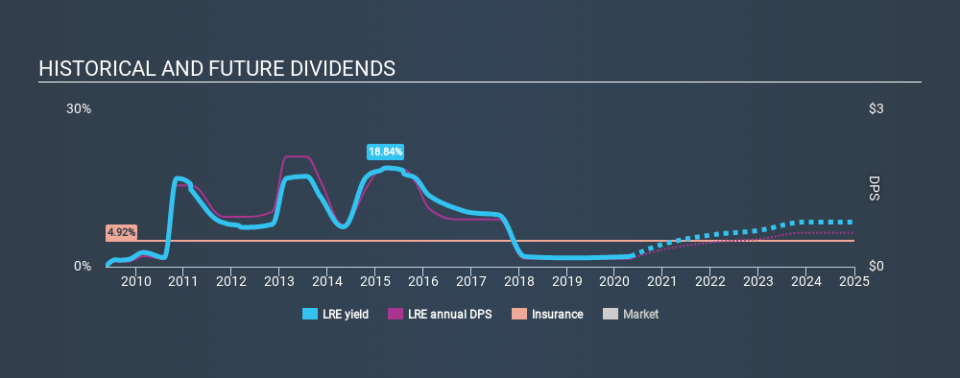Income Investors Should Know That Lancashire Holdings Limited (LON:LRE) Goes Ex-Dividend Soon

Readers hoping to buy Lancashire Holdings Limited (LON:LRE) for its dividend will need to make their move shortly, as the stock is about to trade ex-dividend. If you purchase the stock on or after the 7th of May, you won't be eligible to receive this dividend, when it is paid on the 5th of June.
Lancashire Holdings's upcoming dividend is UK£0.10 a share, following on from the last 12 months, when the company distributed a total of UK£0.15 per share to shareholders. Calculating the last year's worth of payments shows that Lancashire Holdings has a trailing yield of 2.0% on the current share price of £6.085. Dividends are a major contributor to investment returns for long term holders, but only if the dividend continues to be paid. So we need to check whether the dividend payments are covered, and if earnings are growing.
See our latest analysis for Lancashire Holdings
Dividends are typically paid from company earnings. If a company pays more in dividends than it earned in profit, then the dividend could be unsustainable. That's why it's good to see Lancashire Holdings paying out a modest 26% of its earnings.
When a company paid out less in dividends than it earned in profit, this generally suggests its dividend is affordable. The lower the % of its profit that it pays out, the greater the margin of safety for the dividend if the business enters a downturn.
Click here to see the company's payout ratio, plus analyst estimates of its future dividends.
Have Earnings And Dividends Been Growing?
When earnings decline, dividend companies become much harder to analyse and own safely. If business enters a downturn and the dividend is cut, the company could see its value fall precipitously. Lancashire Holdings's earnings per share have fallen at approximately 14% a year over the previous five years. When earnings per share fall, the maximum amount of dividends that can be paid also falls.
Another key way to measure a company's dividend prospects is by measuring its historical rate of dividend growth. Since the start of our data, ten years ago, Lancashire Holdings has lifted its dividend by approximately 4.1% a year on average.
Final Takeaway
Has Lancashire Holdings got what it takes to maintain its dividend payments? Lancashire Holdings's earnings per share are down over the past five years, although it has the cushion of a low payout ratio, which would suggest a cut to the dividend is relatively unlikely. We're unconvinced on the company's merits, and think there might be better opportunities out there.
So if you want to do more digging on Lancashire Holdings, you'll find it worthwhile knowing the risks that this stock faces. To help with this, we've discovered 1 warning sign for Lancashire Holdings that you should be aware of before investing in their shares.
If you're in the market for dividend stocks, we recommend checking our list of top dividend stocks with a greater than 2% yield and an upcoming dividend.
If you spot an error that warrants correction, please contact the editor at editorial-team@simplywallst.com. This article by Simply Wall St is general in nature. It does not constitute a recommendation to buy or sell any stock, and does not take account of your objectives, or your financial situation. Simply Wall St has no position in the stocks mentioned.
We aim to bring you long-term focused research analysis driven by fundamental data. Note that our analysis may not factor in the latest price-sensitive company announcements or qualitative material. Thank you for reading.

